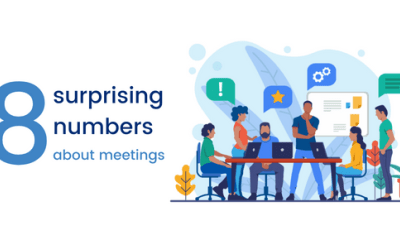In this age of teleworking and virtual exchanges, it has never been so quick or easy to organise a meeting between colleagues. A few clicks, an accepted invitation and you're done. No need to travel, now the meetings come to us. Teams, Zoom, Skype and Hangout are just some of the 2.0 meeting places where everyone can talk easily, despite the distance.
Even though they are clearly essential to the smooth running of a business, these meetings / discussions / points / brainstorming sessions can sometimes follow one another, one after another, and never really seem to end. We have all heard the nickname "meetingitis" for this phenomenon, which has accelerated somewhat since the introduction of teleworking on a large scale.
What if we were to look at meetings from a distance?
Of course, it is not the intention to challenge the importance of meetings; making time for interaction and reflection with colleagues remains essential within a team and a company. But isn't it possible to make them more efficient and avoid certain bad habits?
To answer this question, let's try to take a step back to become aware of all the things that work and the mistakes to be avoided in order to organise really effective points between collaborators.
For example, do you know:
- The maximum attention span of a person?
- The number of employees who admit to falling asleep during meetings?
- Which bad habits are least appreciated (and should therefore be avoided)?
- The price a company pays for all the meetings it has held in a year?
Find out in this infographic!
To better visualise the ins and outs of meetings, we summarise them for you in a brand-new infographic below.
Enjoy the read!
Do you want to elaborate on this? Then be sure to read on to 'Welcome to The Jungle', which inspired this infographic.

